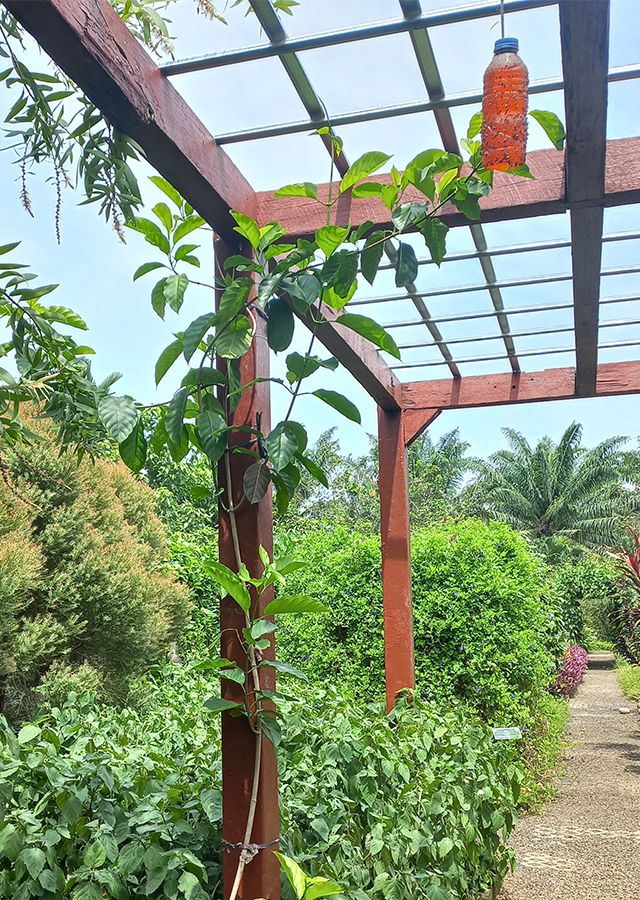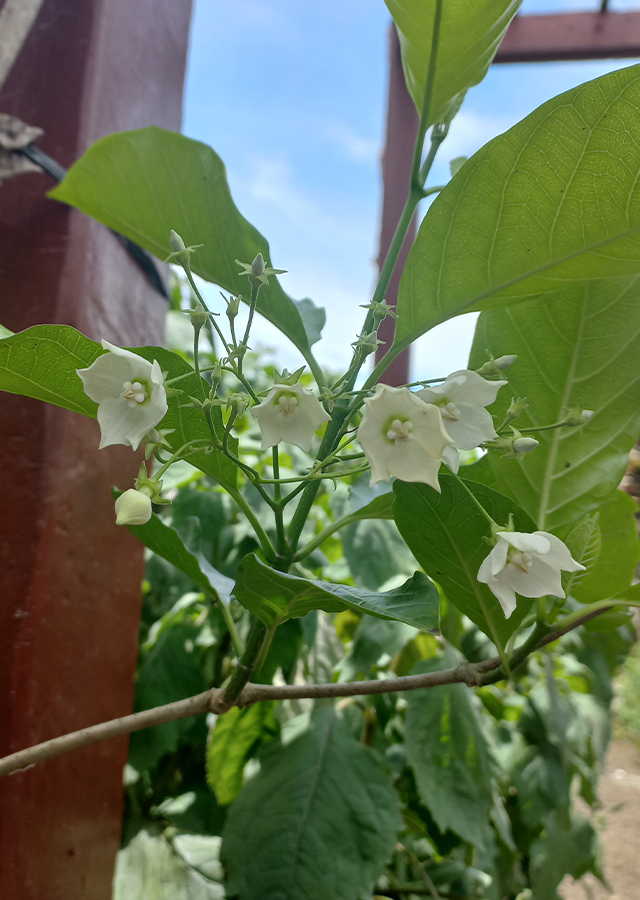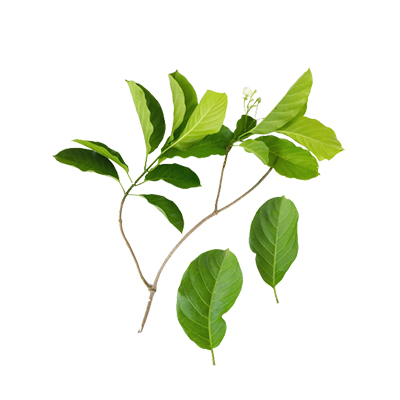Bread Flower
Vallaris glabra (L.) Kuntze
Apocynaceae
Location in our garden
Principal



Synonym
Echites dichotomus Roxb.
Echites hircosus Roxb.
Emericia pergularia (Burm.f.) Roem. & Schult.
Habitus
Climbers. Annual vines, 2-3 m high
Part Used
Leaves
Bark
Flowers
Growing Requirements
Full Sunshine
Need Shade
Habitat
Terrestrial
Overview
Originated from Indonesia (Sumatra, Java, Lesser Sunda Islands). This plant is famous in Thailand and Malaysia because the flowers have a distinctive aroma of pandan leaves or the smell of freshly cooked rice. This species is a popular ornamental plant in Southeast Asian gardens which is usually grown as a pergola. The benefits of bread flowers are not only limited in bringing out the aroma of pandan when cooking rice, they are also useful as herbs, one of which is to relieve bone pain due to rheumatism. This plant also has several pharmacological activities that need to be developed as a drug, one of which is as a cancer drug.
Vernacular Names
No found information on this. Need further research.
Agroecology
Grows well in fertile, well-drained, and moist loam soil, with an individual distance of 0.3 - 0.4 m. Provide a sturdy pergola or trellis to train the plant to climb. This plant blooms best in full sun, as shady conditions hinder flowering. It is necessary to mulch the plant with compost to prevent the soil from drying out or the roots from overheating.
Morphology
- Stems - thin and woody, light gray, smooth bark.
- Leaves - light green, glossy, oppositely elliptical or ovoid with wavy leaf margins. The leaf apex is pointed or has a distinct drip tip.
- Flowers - borne in clusters of large, white cup-shaped flowers located near the ends of the branches. The flowers are about 1.0 to 1.5 cm in diameter, have 5 pointed petals, slightly overlapping. The outer edge of each petal curves inward to form a sharp point in the center. They open in the morning, but the smell of pandan or grilled rice is strongest at night.
- Fruits - oval, beak splitting into 2 dry, fissured fruits known as follicles.
Cultivation
Propagation is done by grafting, grafting/ducking and stem cuttings. Multiply by layering/ducking. Secure the stem to the ground with a brick or similar object, and roots will form on the stem in about 2 weeks. The stems can then be separated from the parent plant and planted elsewhere.
Chemical Constituents
Terpenoids, tannins, saponins, cardiac glycosides, fatty acids, phenolic acids, 2-acetyl-1-pyrroline. The plant contains a mixture of vallarisoside and known glycosides, 3β-O-(α-acofriosyl) together with a new glycoside, benzyl 2-O-β-apiofuranosyl-(1-2)-β-D-glucopyranosyl-2 (Ahmed et al 2010). ) and 0-acetyl-solanoside (0-acetyl-acofreosyl digitoxigenin. Fresh flowers have 50 volatile components.
Traditional Medicinal Uses
- Traditionally used for wounds, repairing teeth and rheumatism.
- It has analgesic, antiproliferative, anticancer, antimalarial activity, and has strong cytotoxicity.
Part Used
Reference Sources
- Royal Botanic Gardens. 2017. Vallaris glabra (L.) Kuntze. https://powo.science.kew.org/taxon/urn:lsid:ipni.org:names:82646-1#synonyms. 17-03-22.
- Flora Fauna Web. 2021. Vallaris glabra (L.) Kuntze. https://www.nparks.gov.sg/florafaunaweb/flora/1/5/1529. 17-03-22.
- Advanced Medical and Dental Institute (IPPT), Universiti Sains Malaysia (USM). Kerak nasi. https://www.amdi.usm.my/kerak-nasi-plantdatabase. 17-03-22.
- Siu Kuin Wong, Eric Wei Chiang Chan. 2013. Botany, uses, phytochemistry and pharmacology of Vallaris: A short review. Pharmacognosy Journal 5 (2013) 242e246.


